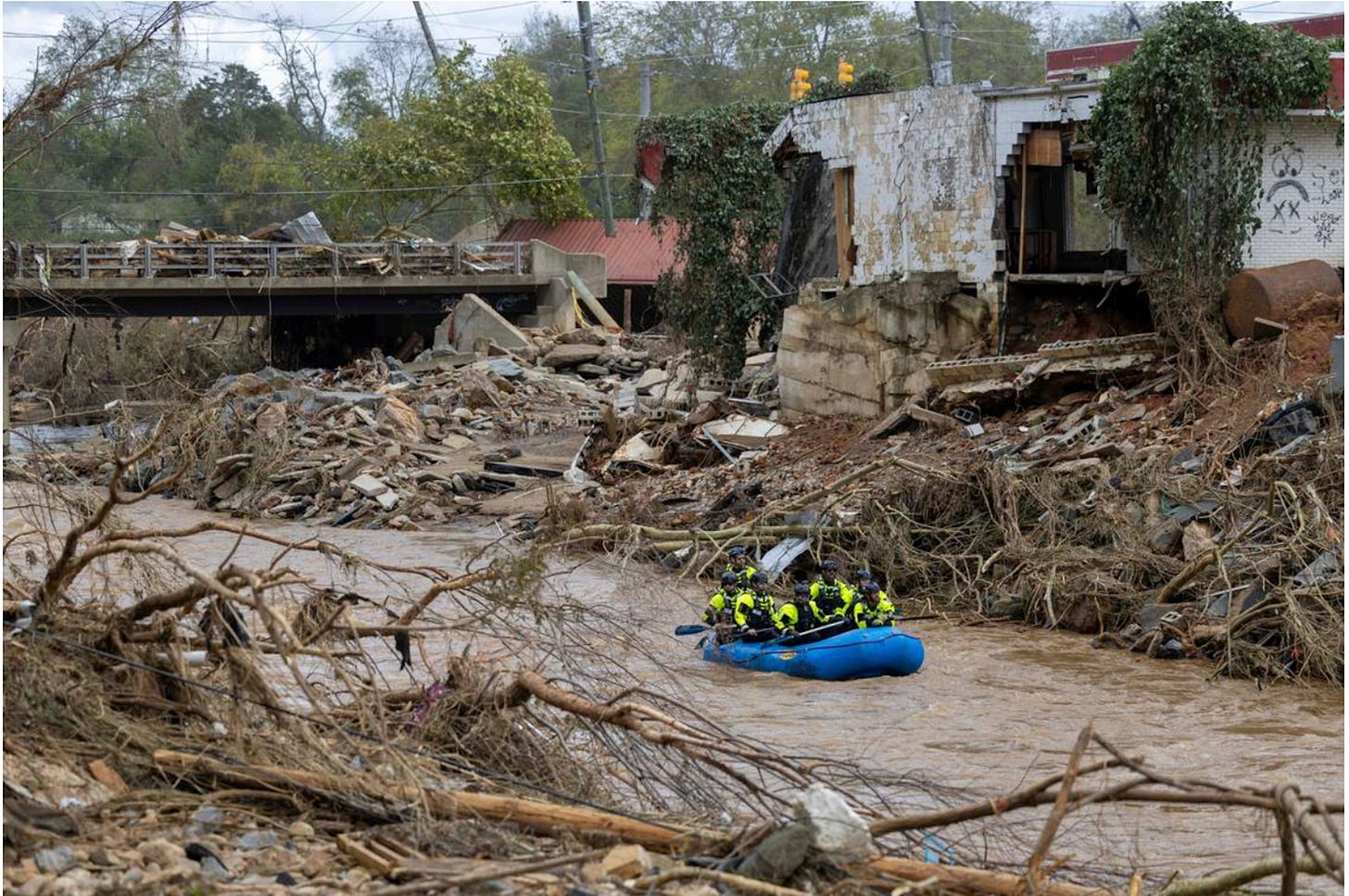I guess you could say I was born a weather geek. As the daughter of a meteorologist, I had no choice, really. My dad was the first scientist I knew. Conversely, I was completely unaware that he was also a pioneer among the country’s first Black meteorologists. That’s another story.
In the wake of Hurricane Helene, sadly the death toll continues to rise. In western North Carolina, residents of Asheville and Swannanoa are still coming to grips with the unthinkable devastation the storm left behind. Not just in these communities, but also in parts of Florida, Georgia and South Carolina.
As we accept the frightening reality that extreme weather events are becoming our new normal, I ponder the ever-increasing importance of atmospheric scientists. Their jobs are proving to be more difficult as storms become more unpredictable.

Growing up, I didn’t quite understand the details of my dad’s work or his research. All I knew was that he was a scientist at the National Oceanic and Atmospheric Administration (NOAA), and he worked closely with the National Hurricane Center in Miami, Florida.
I’ve always had a hefty reverence for the weather, a conviction based merely on what my father did for a living, even though he never talked much about his job. Rather, he did simple yet impactful things like bring home a NOAA Weather Radio that exclusively broadcast local storm warnings. He installed a rain gauge in our backyard, affixing the long, clear plastic cylinder to a 2x4, then pounding the structure into the ground. He taught my sisters and me how to identify rain clouds.
It was fun to guess the amount of rainwater we’d receive after a downpour, and even more fun to watch the device overfill with snow in the winter. Total snow cone vibes minus the colored syrup. But what was always really hilarious was seeing a squirrel mold its furry body to the inside of the narrow cylinder (squirrels have always been a source of entertainment for me).
I learned that weather watching was interesting and cool.
It was also scary.
When I was five, Hurricane Agnes cut a swath up the East Coast, impacting the Washington, DC area where we lived. I remember looking out the storm door at the torrential sideways rain. The wind howled as the young trees that lined our block bent to the ground in submission. Our street morphed into a raging river. Another fast-moving river appeared at the far end of our backyard, frantically flowing overtop of the grass as the water raced toward lower ground.
I think I was more in awe of what I saw than anything. What scared me was that my dad wasn’t home, even though it was dinner time (he was always home in time for dinner). He was still at the office, I guess doing whatever a meteorologist does in a weather emergency. He called to check on us, but I was more concerned about him. Based on what I saw on television, the streets were engulfed in water. We were safe at home but what about Dad? Was he safe, too?
I can’t recall how or when my father got home, but I remember feeling so relieved when I saw him the next day. As it turns out, Hurricane Agnes ended up being one of the largest June hurricanes on record. While we were spared the worst, the storm caused catastrophic flooding in many parts of the Mid-Atlantic region, Pennsylvania, and New York.
Keep in mind, that even with all of its destruction, Hurricane Agnes was only a Category 1 storm. We didn’t see as many intense storms, such as Category 4 (Helene) and Category 5 (Katrina) hurricanes back then, but we do now.
I often wonder what my dad would say about today’s extreme weather and the frequency of stronger, more deadly hurricanes. Most likely, he’d be preaching about why this is so—that this is the effect of climate change. It would alarm him to hear all the folks who dismiss the science that proves carbon emissions are causing the planet to heat up.
Since 1924, Category 5 hurricanes have become more commonplace as the Earth’s climate continues to warm. Hurricanes are also strengthening more rapidly. With the rise in sea levels, these powerful storms have more water to push inland. The warmer climate also means there’s increased water vapor in the atmosphere, which contributes to the intensification of these storms.
As we’ve just seen with Helene, coastal communities are not the only vulnerable regions. Asheville sits inland at the foothills of the Blue Ridge Mountains. More than a week after Helene tore through the region, what’s left of the town looks like a war zone. Bridges, streets, buildings, and vehicles were either decimated or swallowed up and washed away by the storm’s floodwaters.
“If you live in a place that can rain, you live in a place that can flood.”
—Kathie Dello, North Carolina’s state climatologist.
Unfortunately, these storms are getting increasingly difficult to predict. But one thing we know. Our weather will continue to become more extreme as long as the Earth continues to get warmer, and this will result in reoccurring billion-dollar disasters that include floods, wildfires, and drought.
Now, I’m no scientist. Just a weather geek and a weatherman’s daughter who’s starting to pay attention to the writing on the wall in a warming world. We can all do something to reduce our carbon footprint, and I’ll address that in another post. For now, I’m just trying to spread the word like I know my dad would want.
Kelly’s debut book, THE WEATHER OFFICER, will be available in later 2024.




